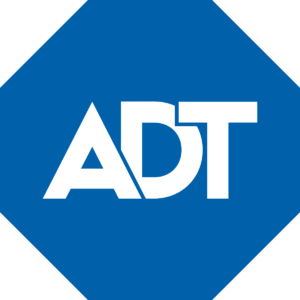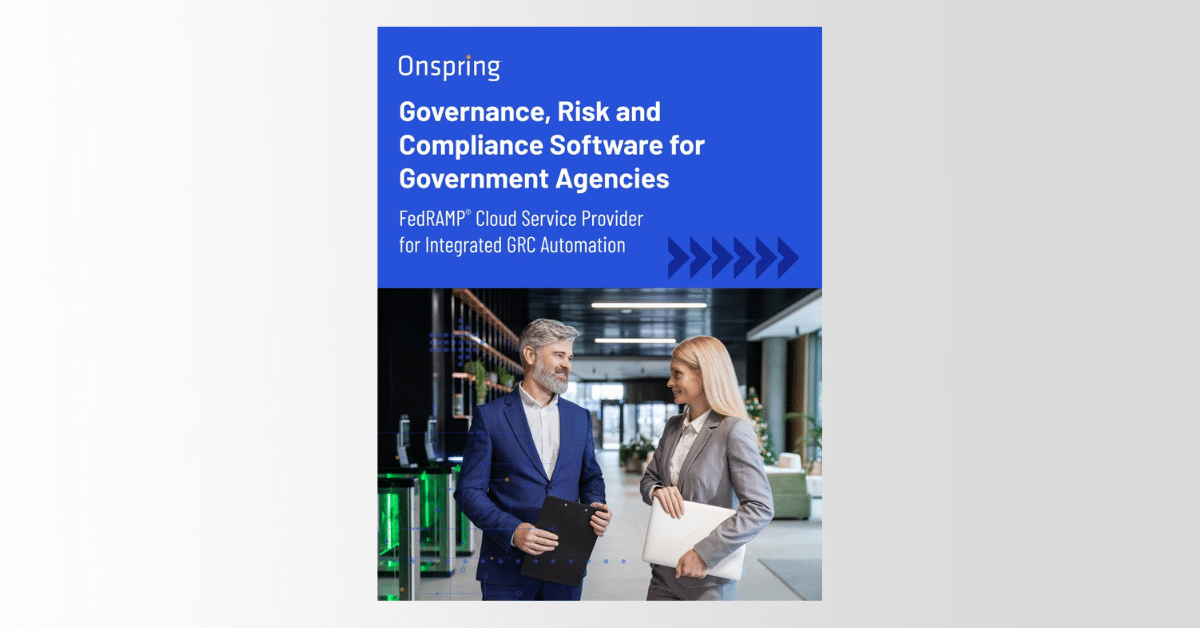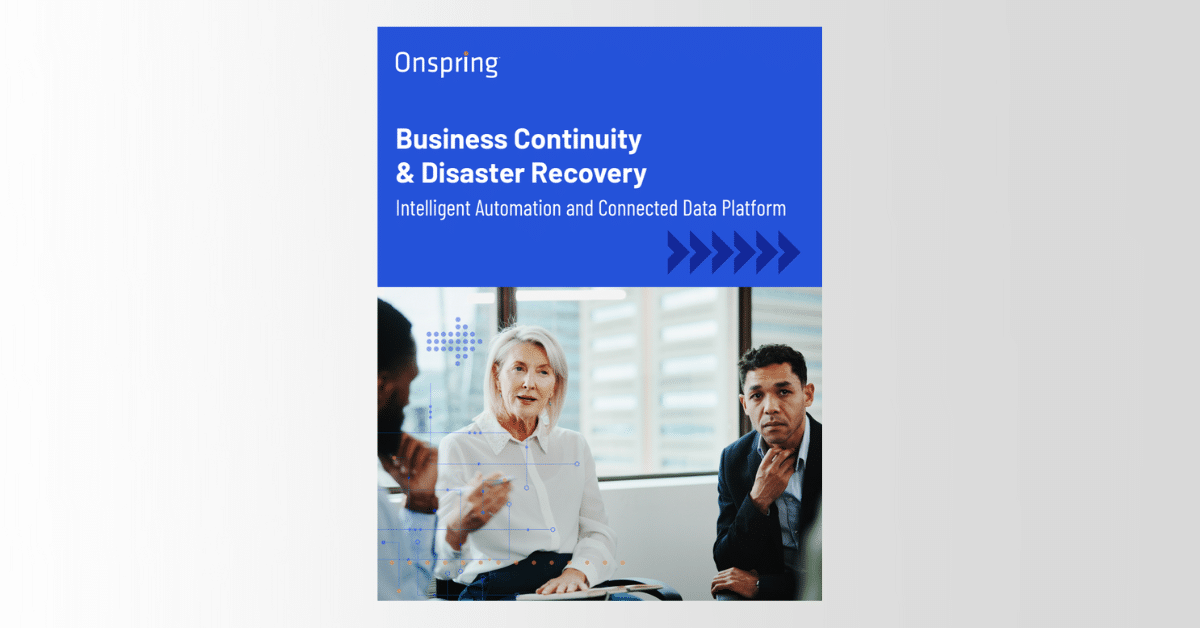A Business Continuity Case Study
OVERVIEW
What happens when the company that prepares for worst-case scenarios needs to plan for its own worst-case scenarios? With over a hundred years of experience, ADT is known for providing alarm systems and 24/7 monitoring services for homes and businesses across the United States. ADT places prime importance on ensuring the availability and reliability of their alarm systems and communication channels. To achieve this, the company relies on a secure network of vendors, which supports a variety of business units, as well as Onspring, a no-code, web-based software, to streamline their business continuity and disaster recovery planning processes.
Profile
Company
Industry
Security Services
Location
Boca Raton, FL
Scale
22,000 employees, 200 U.S. locations
By the Numbers
30,000
vendors to manage
<1 hour
re-stand time
0
data loss
Challenge
Before implementing Onspring, ADT faced several challenges in their business continuity and disaster recovery planning processes.
With over 200 locations, 30,000 vendors and 22,000 employees, ADT’s operations span various business units, including Consumer Small Business (CSB) and ADT Solar. As ADT expanded its offerings, planning and coordination became much more difficult. They quickly recognized the need for a centralized system to manage their business continuity and disaster recovery plans.
“The biggest challenge is knowing what I don’t know,” says Polly College, Senior Business Continuity Manager for ADT. “We have over 30,000 vendors, and while we had a thorough vendor vetting process, there were still plenty of what ifs that needed a plan. What if Microsoft has a communication breakdown and we can’t use Teams? What is our alternative method for communicating amongst ourselves?”
While teams across the organization categorized their own vendors and College conducted BIAs, there was no central place to assess and organize for everyone.
“It was hard to share the knowledge across different people in different departments. To get to that information, you had to find John’s spreadsheet over here and Sally’s spreadsheet over there,” says College.
Ultimately, ADT had the same BCDR challenges that many enterprises face.
- Disjointed Processes: Like many large companies, ADT’s departments operated in silos, resulting in a lack of communication and a fragmented approach to planning and coordination.
- Lack of Centralized Information: There wasn’t a single, authoritative location to store and access business impact analyses, disaster recovery plans, and related documentation. This made it difficult to ensure consistency and accountability across the organization.
- Limited Visibility: Executives and stakeholders had limited visibility into the status of comprehensive business continuity and disaster recovery plans, making it challenging to assess preparedness and to make informed decisions.
Solutions
After a conversation with peers at Gartner, College looked into several recommendations for a BCDR system. Ultimately, she turned to Onspring, a leading, no-code governance, risk and compliance (GRC) software, to house their business continuity and disaster recovery planning needs.
Success Story

“Onspring was honestly just what we were looking for: something that was easy to implement and had the flexibility that we needed to change nomenclature and processes to make it more business-specific for us.”
ADT

The Onspring system allows ADT to formalize and account for their plans through several automated solutions.
Business Impact Analysis
For the hundreds of people that complete ADT’s BIA surveys, College was able to configure company-specific fields within ADT’s forms. “You can do a survey to get three pieces of information, or you could do a survey to get 300 pieces of information,” says College.
And that information gets pulled back into Onspring to create dashboards and reporting. For example, the current form may include the completion date of the last DR exercises, when the next one is scheduled and if and when tabletop exercises have been completed. They also capture landscape ecosystem group as well as production & recovery servers.
After the initial BIAs were completed, which took almost a year, College used Onspring to reevaluate every single one. This process was key to ensuring that all business applications were still relevant and beneficial.
“Now we do annual BIA refreshes and make sure that applications are still valid, we still have our same user base, and it still has the same impact to our businesses.”
When significant changes occur in the applications, BIAs are conducted more frequently. This ensures that any new or replaced application is evaluated for its impact on the business.
Disaster Recovery Planning & Activation
Regular DR plans help businesses better prepare for potential disasters and mitigate the impact on their operations. ADT’s plans are related specifically to their business impact analysis for each application. College credits Onspring’s workflow automation capabilities to streamline the planning and execution of business continuity and disaster recovery processes. Tasks and responsibilities are assigned to specific individuals, and notifications and reminders were automatically generated, ensuring accountability and timely completion.
“If we have an issue, we can activate the plan and Onspring takes the team through a very specific workflow that automatically moves through the team based on completion. It’s very easy to get notifications that take us right into Onspring, which tells the owner his or her tasks and how to complete them,” says College. “It’s a seamless way to make it through a plan, and we can expand or revise as needed.”
In Onspring, each DR plan relates to a specific application and is tested at least once a year, quarterly if it’s a new application. College also uses Onspring to measure leading indicators and lagging indicators to effectively manage incidents and improve their overall incident response capabilities.
Testing & Exercising
“Our biggest goal is to make sure applications don’t go down,” says College.
That’s why testing and exercising in Onspring is critical. ADT tests its obligation to make sure they can effectively manage any issues that may arise and switch servers if necessary. Testing also ensures that each application can be recovered within the necessary time frame, with life-safety applications requiring zero downtime.
ADT’s proactive testing measures to ensure the reliability of applications and minimize both downtime and data loss.
Results
By implementing Onspring, ADT achieved significant improvements in their business continuity and disaster recovery planning processes.
Structured & Streamlined Processes
Despite the irony, more structure for ADT’s BCRD processes actually came from Onspring’s flexibility. Onspring’s no-code platform allowed ADT to easily configure workflows, forms, and dashboards to align with their specific requirements. And thanks to fully tested DR plans across the enterprise, activated tasks can be completed more efficiently, ensuring timely responses and minimizing downtime.
Last year, College faced a real-life scenario involving a system configuration issue and an upgrade that caused part of an application to go down. Thanks to their thorough planning and following our established procedures, College reports, “We were able to take down and re-stand the system in under an hour.”
This experience demonstrated the effectiveness of their preparation under pressure.
Automated, Centralized Repository
More than a listing, Onspring serves as a one-stop-shop for all BCDR activities, ensuring that plans are related to information that’s readily available to authorized users.
Linking survey information, BIAs and DR exercises creates the connection among necessary parties to review, and sign off on the plans, including the business owner, finance partners, and IT personnel. And if an issue occurs, everyone can get to the plans.
Increased Accountability
While assignments and notifications have increased accountability in terms of responsibilities, College has also leveraged Onspring’s reporting to provide a defendable audit trail, allowing executives and stakeholders to easily track progress, review plan statuses, and assess overall preparedness.
“We can show stakeholders dashboards that say we had 15 plans that we needed to exercise. We did all 15 plans in one overnight session, and there was no data lost,” says College. “Everything came back up as it was supposed to. Here’s our results.”
College says she doesn’t lose sleep over processes anymore because they are very well established now. “From an overall ADT perspective, it’s defendable. It’s auditable. It’s now easy for business executives to understand.”
Auditable BCDR Plans for Quick, Reliable Activation
With Onspring as their partner, ADT successfully formalized their business continuity and disaster recovery planning processes. By centralizing their plans, automating workflows, and improving visibility, ADT enhanced their preparedness and ability to respond to life safety emergencies. Onspring’s configurable and flexible platform provided ADT with a user-friendly solution that met their specific needs.
As a result, ADT can confidently provide their customers with reliable and uninterrupted security services, ensuring peace of mind for millions of households and businesses across the country.



